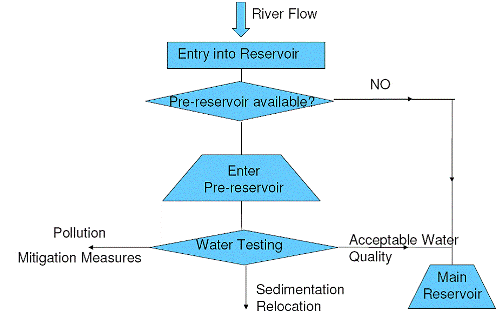
tel (00357) 22374027 Fax (00357) 22374933 e-mail: toumazis@koronida.com.cy |
Pre-Reservoir Proposal |
Dams, or reservoirs, have as their main objective the storage of storm water for use by mankind (power generation, irrigation, water supply, flood control etc). Cyprus has been always facing water shortage problem. In order to mitigate this problem the policy “Not a drop of water to be lost at sea” was adopted. As a result of this policy almost all main rivers of the island have been dammed. The arrest of sediments in the reservoirs is an indirect impact of the water storage due to the transport of sediments by the surface water flow. The trapping of sediments in the reservoirs:
The dams of Cyprus have succeeded in the mitigation of the water problem of the island but they have caused the arrest of the evolution of the deltas and the erosion of beaches. For the achievement of sustainable management of sediments in the presence of reservoirs it is necessary to develop a new method for the acquisition of sediments trapped in reservoirs and their transportation to their natural destination, the mouth of the dammed river. In parallel and independently from the sediment management, it is necessary to ensure that the quality of the water entering the reservoir is acceptable. Fires, accidents, effluents of fertilizers, chemicals etc might pollute the water stored in the reservoir. A new proposal has been developed in this research program which addresses holistically the problems of sediment management and water quality. This proposal is, in summary, a small dam, called pre-reservoir with the following characteristics:
The cost of this proposal is very low compared to the benefit achieved. In particular, the design of a pre-reservoir as a pilot project for the Evretou Dam was carried out.
At policy level it is proposed:
|


